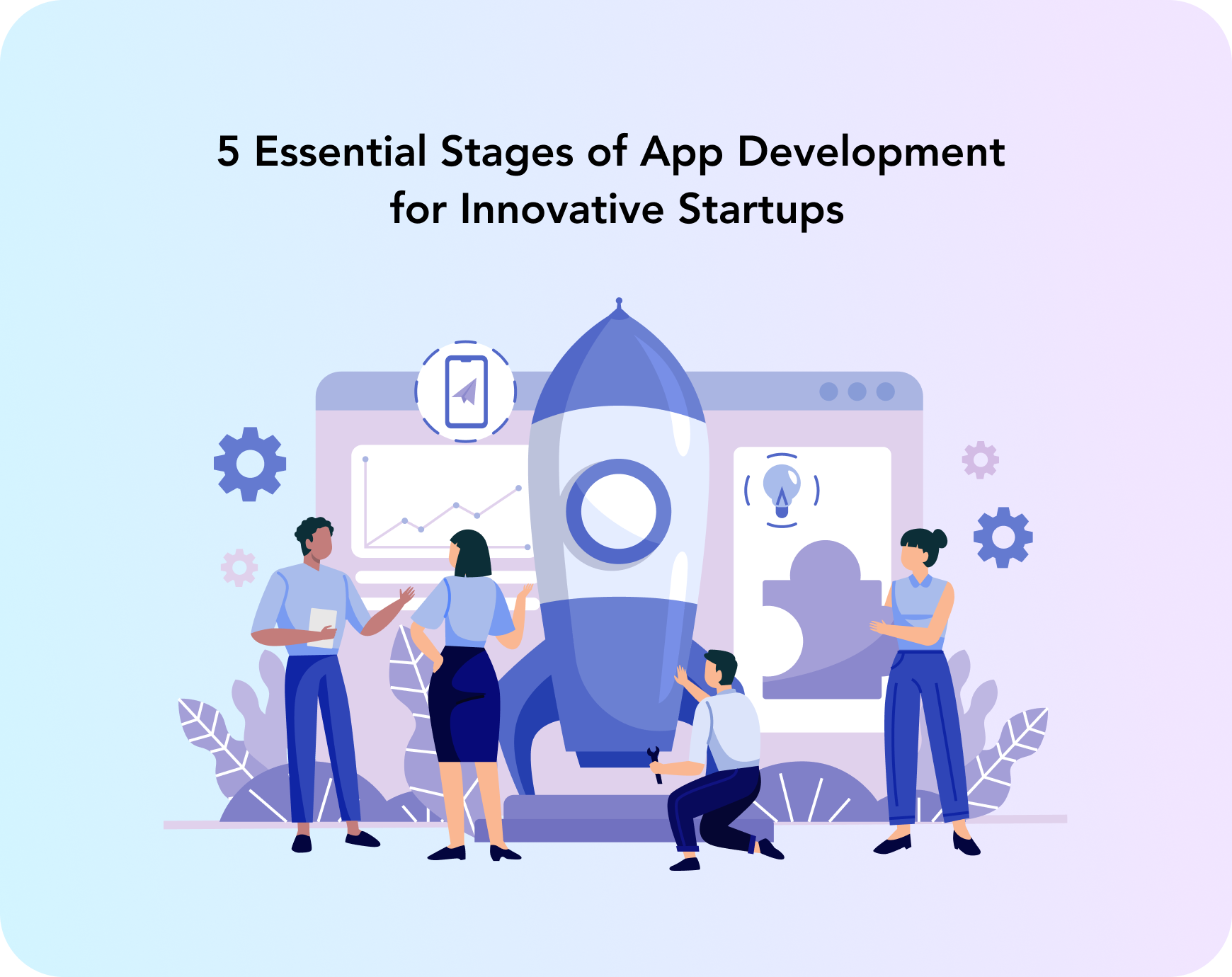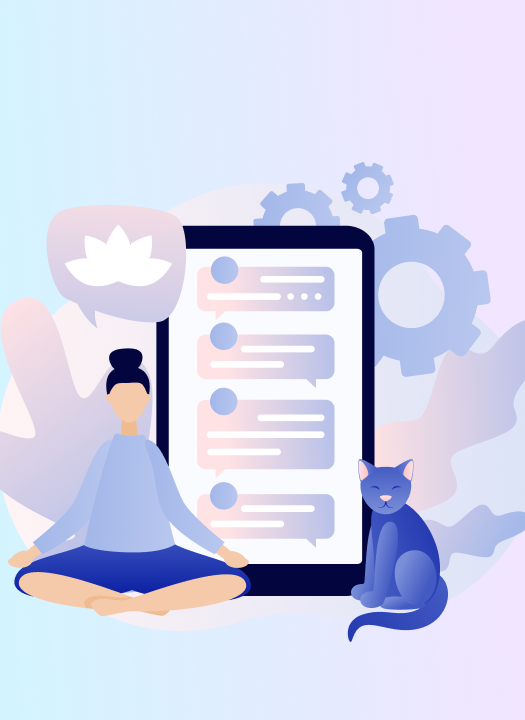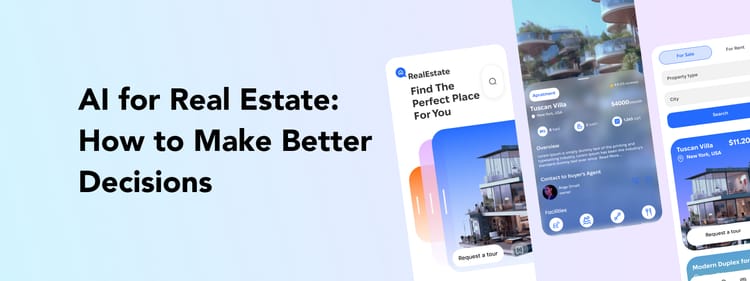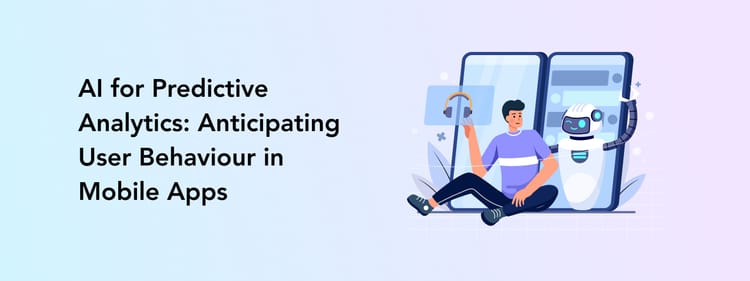The process of developing a mobile app may seem like a labyrinth to those who never had a chance to make an application. On the one hand, it all seems rather simple — just follow the essential app development stages and do everything step by step. On the other hand, each stage impacts the next one, so making small design or project management mistakes can ruin the whole product. That’s why all the phases of app development are critical for the product’s success, and none of them can be considered less important. We invite you to go through each and learn what value they bring to the final result.
Why is application development divided into stages?
Before we go ahead with the essential stages of developing an app, let’s discuss why the development process is divided into stages. It’s all very simple — to avoid a mess and create a great product. To put it more broadly, dividing process into several stages means that
- The client has clear expectations about each stage and knows what the outcomes should be
- It is easier to make changes and adapt the product
- The process is straightforward, separated into smaller milestones, and all the deadlines are calculated
- Each professional can plan their time accordingly
- The project is overall well-organized, simple to manage, and predictable
- There is no chance to make big mistakes as each professional has their area of responsibility and steps in right when needed
After reviewing these perks, it is quite reasonable that the development process is divided into stages, isn’t it?
5 Stages of App Development
Now, let’s take a look at each of the five stages of mobile app development.
Pre-planning and strategy development
Before getting to the very job, there are some questions to which you and your development team need to find answers. That’s right, one more thing: first, you need to team up with a reliable company that can assist you with building an app.
After you choose an outsourced company or in-house developers, most likely, they will ask you about your
- project’s tech & design requirements
- app’s goal and target audience
- preferred platforms (iOS, Android, or both), and development approach (native or cross-platform)
If these kinds of questions make you panic, no worries — just having an idea of your mobile app is more than enough. Usually the company providing you the development services should offer business strategizing and tech consulting too so that you can make informed decisions; at least that’s what we at Perpetio do;
As a result, after the pre-planning stage, you will get a project roadmap or a proposal that outlines the deadlines, milestones, budget, risks, as well as design and tech requirements. To bring those requirements to life, time to start with the UI/UX design.
UI/UX design
The design phase starts…no, not with the design. Research is as important. UI/UX designers use several research methods to ensure that the product they are to create will be competitive on the market, needed by the audience, and satisfactory.
The research approaches include
- Studying the market and discovering competitors
- Identifying the target audience, their pain points, and drafting a user persona
- Interviewing the potential users
After the designers have a clear idea of what kind of product the audience would like to receive and which aspects can help it stand out in the market, they create the user flow and first app prototypes.
Usually, these are wireframes: the basic prototypes that outline the application's pages and structure. Wireframing is necessary not only for careful interface planning but also for making rapid changes in the functionality. If you feel like some features have to be added or removed, it’s quick and easy to do so. Afterward, the designers create high-fidelity clickable prototypes so that you can evaluate the user's journey through the application.
Finally, when the user flow is approved, it is time to decide on the aesthetics, including fonts, colors, logos, and illustrations. Usually, along with complete designs, a client also receives a style guide to walk them through the product’s branding and bring unification to its representation.
Development
After the UI/UX designers are all done, we can move on to the next app development phases. Development, of course, is no less important than design. Whether it’s iOS app development or Android app development, a professional team behind your back will achieve app development milestones more effectively and with better results.
At this stage, clients usually have already made a choice towards a preferred mobile platform (iOS or Android) and technology stack. It’s time for the mobile developers to step in and do the job. Feature by feature, the engineers implement the designs and create all the necessary infrastructure. As for the languages, Swift is used for native iOS development, Android developers work with Java or Kotlin, and a cross-platform solution can be done with Flutter or React Native.
Often enough, there are several services to integrate, such as payment gateways, messenger APIs, and security protocols. Long story short, there is always enough work to get done. No wonder the very development is one of the longest stages of mobile app development.
Testing
Many tend to think that the app creation process ends when the last line of code is written. It is not true. Even with the most professional developers, minor bugs occur; that is totally normal and part of the process. At the same time, you can’t let your users face inconvenience when opening the app and, as a result, get disappointed. Testing is one of the most important mobile app development stages.
Typically, the QA stage includes
- Performance testing to evaluate the load speed of the app, the amount of data the app can work with, and its overall rapidness and responsiveness
- Security testing to find out any possibilities of data leaks and the reliability of the storage
- Usability testing to see the app with the user’s eyes and notice any bumps
After all the bugs are fixed, and the whole team is sure that the app runs smoothly, the team takes care of the last app development steps: release and maintenance.
Launch and maintenance
At Perpetio, we don’t let our users go all alone into the deep blue sea of app marketplaces. After all, getting the necessary certifications, deploying the app, and streamlining the monetization are as necessary app development steps as writing the code.
Without the correct launch, the efforts spent on all the previous application development phases are in vain. That’s why we always encourage our clients not to skip any stages of app development. The team you are working with can take care of deploying your custom app on Apple’s App Store or Google Play Store.
Additionally, analyzing the app’s metrics should also be among your mobile app development process steps. By tracking the app’s performance and user satisfaction rates, you can understand the problematic points, fix any issues, or add features your audience wants to see. That’s the basics of scaling up for a startup. You can track the app’s performance via dedicated tools as well as by checking the reviews and interviewing the audience.
Consider Perpetio your trusted partner
Perpetio has been creating mobile apps for startups since 2014. And let us tell you one thing — without proper pre-planning, research, and a business strategy in mind, it is very hard to make a decent product. When getting to know a new client who is looking for full-cycle app development, we always make sure to walk them through all the mobile application development stages and explain their deliverables and time frames.
Let’s take an example of our case: the Selfit fitness app. Before getting started with the wireframes and UI design, our team researched the user persona and investigated their pains. As a result, we could exactly understand which features the target audience would be looking for in a fitness app and included those in the user flow. These features became the competitive advantage of the app.
After extensive market and audience research, we drew a user flow considering our findings. As a result, Perpetio rolled out a useful, competitive product, knowing it has everything the audience wants.
We hope this case highlighted the importance of every development stage for you. Of course, to save on the development cost, you might not want to spend on research or business planning, which is understandable for MVP projects. Still, we always say that preliminary research should not be viewed as an extra expense but as a must-have stage of developing an app.
There is no way to build a lego figure while missing some steps, right? The same goes for mobile app development — you can’t skip a step and hope to get a great outcome. Careful planning and professionals aboard are the keys to success, agree?
FAQ
- How many phases are there in app development?
Usually, there are 5 application development stages: preplanning, UI/UX design, development, testing, and release.
- What comes first in app development?
The first stages of the app development are project planning, creating the strategy, and drafting the requirements along with the project roadmap.
- Can I skip any application development steps?
We do not recommend you disregard any of the app development steps in your application scheme because it can disrupt the process, significantly reduce the quality of the final product, and lead to higher dissatisfaction rates among the users.





